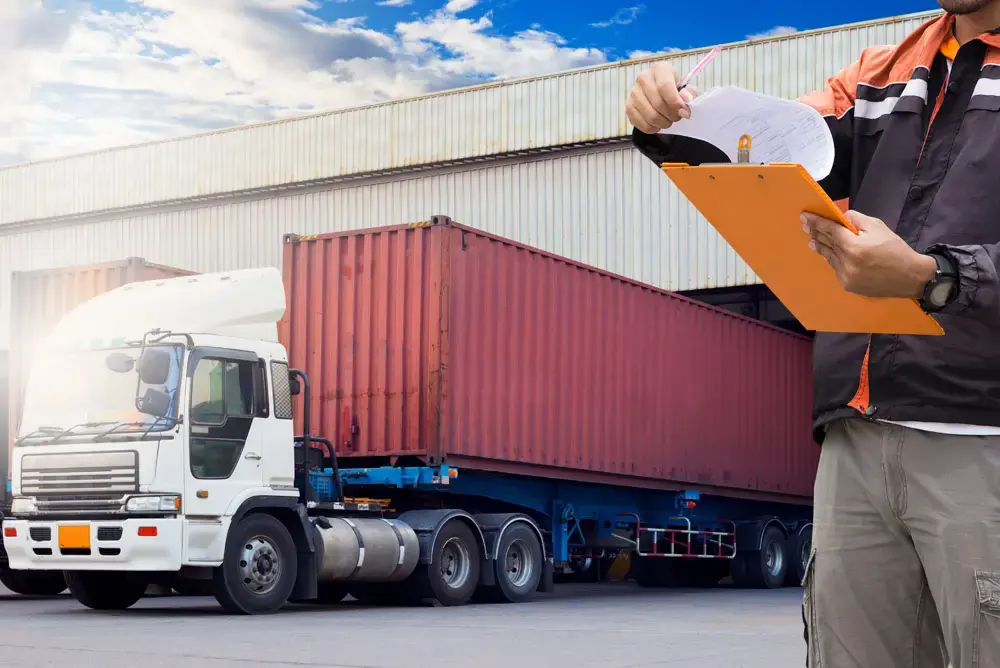Cross Border Logistics
Heneways Editorial Team
2024-02-11
Reading time: 6 minutes

The field of study known as "cross-border logistics" is built on the idea that there are transit connections between countries all over the world. It is a form of network that helps with supply chain management and the efficient movement of products in accordance with the various legal and tax restrictions that exist on a worldwide scale.
The delivery process can be affected in various ways by the four primary modes of logistic transportation: road, rail, maritime, and air shipments. A great deal is determined by the nature of the product itself, namely whether or not it is perishable and challenging to keep or pack. These details will be required to select the appropriate mode of transportation, determine an estimate of the shipment's worth, ensure its safety, and carry it over international borders.
A Deeper Look Into Cross-Border Logistics
Moving goods from one place to another is simply one aspect of what is encompassed by the term "cross-border transportation." In addition to this fundamental undertaking, a few other variables are just as significant, such as the number of hours spent crossing borders, the track record, and the correct documents for transport.
The shipment's destination and the amount of time it spends in transit both play a role in determining the likelihood of encountering unanticipated challenges and circumstances. You need to remember that the standards can vary from country to country, particularly when the countries are not affiliated. One of the best examples to highlight these variations in North America is provided by the regulations for transporting goods across the border from the United States to either Mexico or Canada.
Everyone encountering such processes for the first time will find the level of intricacy to be a formidable obstacle. On the other hand, a well-prepared logistics partner can provide internal and external freight, service for the majority of product categories, if not all of them (for example, the sensitive ones), and possibly well-located distribution facilities. These are an extension of the requirements that we previously discussed.
As soon as you realize how extensive a technological and business background is required for international transportation, it becomes apparent that it is worthwhile to consider working with a reliable supplier. Proper planning and logistics process optimization can aid in a company's expansion with the help of a partner with a good fleet and who works with responsible shippers on both sides of the border.
Techniques For Efficient And Successful Cross-Border Logistics
Construct Warehouses Nearer to the Borders of the Country
It might appear to be common sense, yet the proximity of your location to a border determines how straightforward it is to transport items across that border. By reducing the distance drivers need to travel to reach their destination, it will be possible to increase the frequency of shipments and speed up all of the activities that occur across the supply chain. This also means that there are a lot fewer procedures, such as route planning and modifications for delays, that need to be updated frequently in the future.
Additionally, as a consequence of this, it is quite possible that your company will be selected more frequently than competitors for contracts and routine purchases of goods in your industry made by consumers or clients located across the border.
Because of your proximity to the border, your company may be able to deliver the customers' goods to them more quickly and with possibly less bureaucratic hassle than your competitors, who are located more than a thousand miles away from the border. This information will be communicated to the customers.
Technology Designed to Make Transportation Activities More Efficient
Utilizing real-time information that is obtained by efficient technological solutions and being included in your logistics strategy is the most effective method for streamlining your business's operations. This can assist in providing your company with the most optimized processes possible, which is especially helpful if you are managing several transportation and shipments of products originating from different parts of the world.
Determine The Best Shipping Model For The Product Depending On Its Characteristics
It is possible that using trans-loading services, in which trailers are delivered to a nearby warehouse and unloaded from one carrier to another from the country of destination, is preferable to using a door-to-door model, in which a single carrier transports the trailer from end to end. However, this preference is dependent on the product being shipped.
Door-to-door delivery is frequently the best and only viable choice for the delivery of time-sensitive goods in industries subject to tight rules, such as the pharmaceutical industry or specific food industries.
Take Into Consideration Forming Partnerships With Bonded Carriers
Bonded carriers are exempt from paying any duties that may be applicable. In addition, given that these carriers are exempt from the requirements of customs clearance, they are able to cross the border more quickly than non-bonded carriers. The entirety of the transportation procedure is significantly sped up because of these two elements, which also keep expenses significantly lower.
Consider Using A C-TPAT (Customs-Trade Partnership Against Terrorism)
C-TPAT stands for the Customs-Trade Partnership Against Terrorism. When it comes to matters of safety and protection, these carriers are typically categorized as "low risk." As a consequence of this, they are not subject to as many inspections. In addition, cooperating with a C-TAPT-certified carrier helps to speed the shipping process somewhat, similar to how working with bonded carriers does the same thing.
